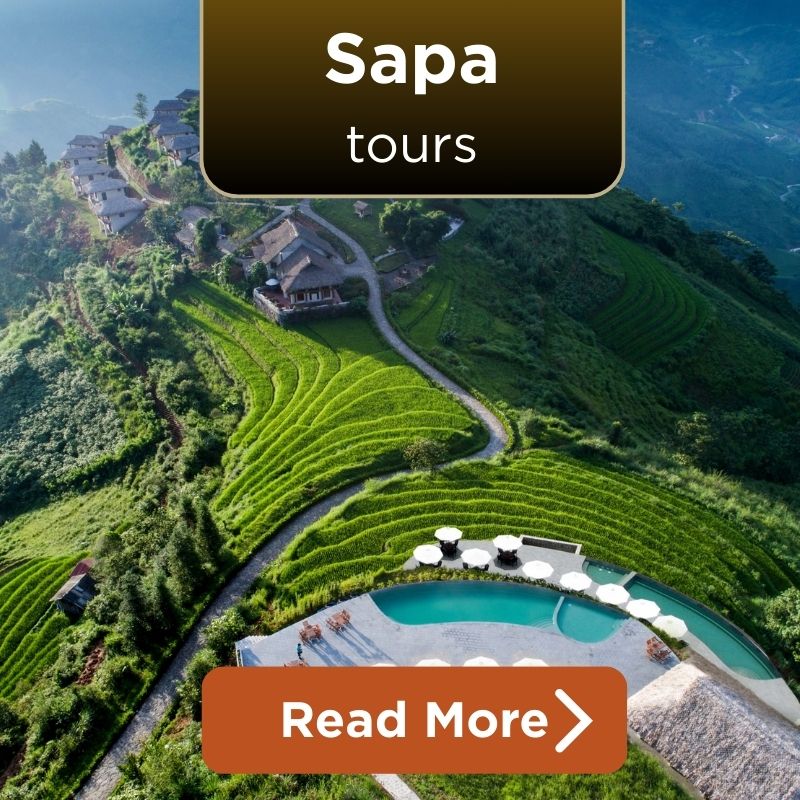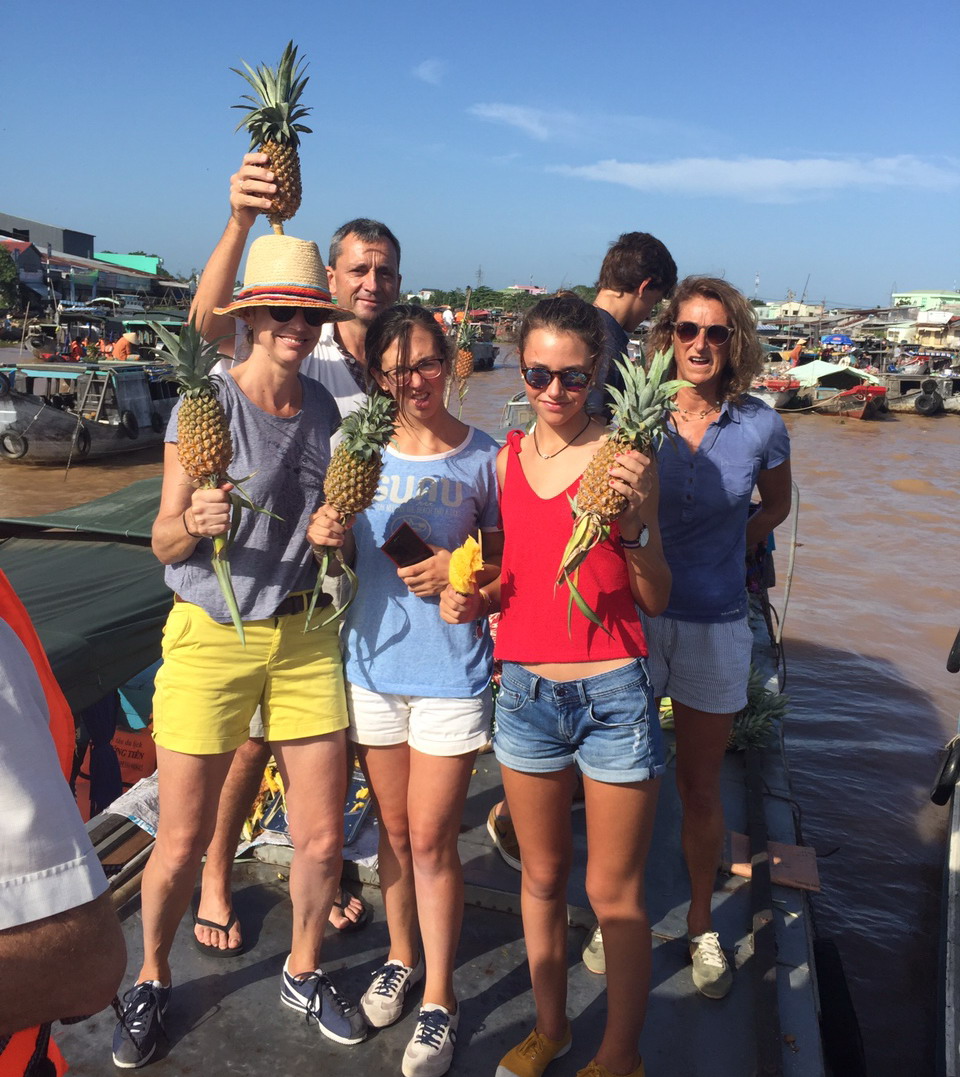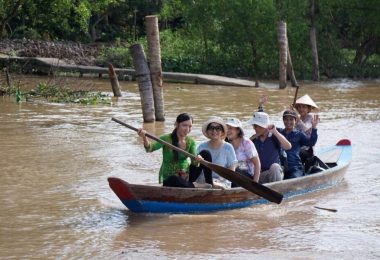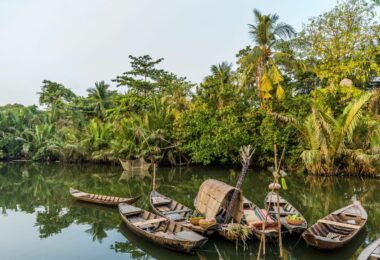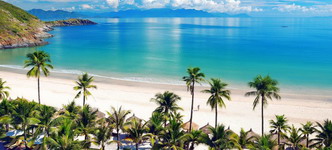Vietnam is a southern country with many islands but still accounts for 1/3 of the total territory. As an agricultural country, Vietnam’s economy relies on food production. The Mekong Delta is one of the most visited regions due to its dense river systems and fertile soil. This place is known as the rice bowl of Vietnam, as well as a tourist attraction. The delta has many small companies that produce coconut candy, which is an unforgettable experience. Come visit Coconut Candy in the Mekong Delta with us.
Historical Background of Coconut Candy in the Mekong Delta
Origin and History of Coconut Candy

Coconut candy in the Mekong Delta
Coconut candies were first made in Ben Tre, which is one of the provinces in the Mekong Delta also known as the “Kingdom of Coconuts.” These sweets were first produced at the beginning of the 20th century as homemade candies. However, such tasty products could not remain in the neighborhood only and they conquered the Mekong region. Consequently, they moved to factories to be produced on a commercial scale.
Importance in Local Culture and Economy
Coconut candy in the Mekong Delta is a favorite delicacy of many people. These candies are always served to the guests on special occasions or holidays. People also prefer to buy them as a pocket present for both local people and tourists. On the other hand, coconut candy is a good sphere of employment for many local families. It is worth mentioning that factories that produce coconut candies in the Mekong Delta are numerous and are often used services by tourists in the framework of tours.
Evolution of Production Techniques
There have been some changes in the production of coconut candies, though, at the core, recipes and techniques have not changed significantly. Mainly, they have to do with the production process, machinery, and agricultural equipment, which help to increase the output. Factories tend to preserve old methods to make coconut candies homemade.
The Coconut Candy Factory Tour Experience
What to Expect
The Coconut Candy in the Mekong Delta is an experience in itself. As one moves to the factory, he is greeted by the sweet aroma of coconuts and sugar! This is the first such experience and the central part of any travel! A good start with the history of coconut candy and its making by the factory.
Factory Setting and Atmosphere

Modern Machinery
It looks like a busy factory with several people employed and busy at various stages of candy manufacturing. The process uses some very rustic tools like huge stirrers and modern machines as well. The factory is a noisy and crowded place with a lot of people engaged in various processes, animated and motivated as well. The noise involved is more of machines and people talking.
Expertise in Local Guides
The people are local guides who take the visitors on a tourist tour. These people are generally well trained and sound very experienced as well. They seem to be having complete and comprehensive knowledge of the making of candies at every stage. They generally seem to be professionals engrossed in the profession and are not newcomers as well. They help at every stage in explaining as well as initiating interaction.
Detailed Process of Making Coconut Candy
Selection and Preparation of Ingredients
This process usually starts with choosing the very best coconuts. Thus, it is not that easy to make coconut candy since only mature either sweet or crunchy fruits are selected. First of all, coconuts are husked, and the meat is taken out and well-washed to clean out all the dirt.
Extracting Coconut Milk
Grated meat is squeezed tight and thoroughly to let as much sweet milk come out as possible. The quality of the coconut milk is directly proportional to the quality of the candy. It should be sweet and crystal clear.
Mixing and Cooking Ingredients

Ingredients for Candy Production
Then the squeezed milk is added to the malt syrup and sugar in huge cauldrons. This mixture is dissolved and then waits over the controlled flame. It is extremely important to stir the mixture constantly to prevent it from burning and to let it warm up evenly. The waiting process can last for a few hours; the mixture finally thickens into a “caramel” mass that remains liquid, extremely thick, and creamy. This product is then molded.
Molding and Cutting the Candy
The liquid is transferred into tin molds and is left to cool down. As soon as it becomes hard enough the mass is cut into a great number of little dice.
Wrapping and Packaging
The candies are wrapped in edible rice paper first, and then in bright paper or foil. Such “packaging” makes them extremely attractive to tourists and preserves them. Some modern factories have special automated machines that can wrap the candies. At the same time, there are some small, family, or traditional factories where the whole process is done manually.
Traditional and Modern Techniques
The factories that produce coconut candy use several traditional techniques and methods of production. Although many factories have turned to the use of modern machinery as a way of scaling production up, many of the traditional methods used are also highly valued. For example, the mixture of the candy is stirred by hand and the candy is wrapped in each of the leaves individually also by hand. This ensures that each piece of candy is made to the highest possible quality and that each piece will be relatively authentic.
Role of Local Workers and Craftsmanship

Creating jobs for people
Many of the workers in the factories are skilled artisans who continue this time-honored tradition. Some of the workers will have learned their skills at their parent’s knee, helping to stir the mixture, wrap it, or do other jobs in the production process. All of this hard won ability and experience goes into the crafting of the candy and is part of the reason that the standards of production can remain so high.
Unique Aspects of Coconut Candy Production in the Mekong Delta
Use of Local and Natural Ingredients
One of the aspects that make coconut candies suitable for Mekong tours is the use of natural, local ingredients. Typically, coconuts are obtained from local farms. In this way, it is possible to ensure the high quality and safety of this input. Besides, this strategy is more sustainable, reducing the negative environmental impact of transportation. Another point is the use of natural sweeteners which also adds value to this solution. In such a way, local natural components make coconut candies ideal for tourists.
Traditional Methods Preserved in Modern Times
Even though modern technologies can be used in the process of making this type of candy, many factories apply traditional methods in the Mekong Delta. This choice is made because of the candy’s peculiar features in taste and smell, while the texture is also influenced significantly. That is why, even though it is a cheap and efficient solution, factories decide to choose the time-consuming and labor-consuming method of work. This approach distinguishes local organic sweet stuff from others, making it perfect for a tour.
Variety of Flavors and Types
The Mekong Delta manufacturers produce a wide variety of coconut candies. For instance, classic, durian, pandan, and peanut sweet stuff are known. This feature makes this solution suitable for many people with different tastes. Besides, it demonstrates the creativity and inventiveness of local factories.
Visitor Engagement and Activities
Hands-On Activities
Visitors to the coconut candy factory can participate in several hands-on activities, such as making and wrapping their candies. Such interactive sessions allow people to learn more about the work and craftsmanship that goes into production.
Tasting Fresh Coconut Candy
One of the most interesting parts of the tour is getting to taste a fresh batch of Coconut Candy in the Mekong Delta. The taste of the coconut candy right off the production line is arguably better than any other day.
Interactive Sessions with Artisans
As part of the tour, the factory owners introduce the guests to some of the incorporated local artisans. In itself an interesting enough experience, such sessions also allow the visitors to learn more about the skill and effort that goes into traditional candy production, as well as the many pitfalls the artisans must avoid to preserve the quality and tradition of the product.
Additional Attractions
On top of samples and information about their product, many a coconut candy factory offers their guests the opportunity to purchase some locally-themed souvenirs, other snacks, and refreshments. Some factories even add a scenic boat ride along the Mekong River to the overall experience.
Benefits of Visiting a Coconut Candy Factory

Main Ingredients
Educational Value and Cultural Insights
The Coconut Candy in the Mekong Delta is not only an attraction but a source of significant educational value for tourists. That is so because to understand the nature and significance of the place, visitors need to learn more about the local culture and how candies are made. In turn, this experience contributes to the overall understanding of the area and its heritage.
Supporting Local Businesses and Communities
Tourists who take part in these kinds of tours immediately support local businesses and communities. It is even more appropriate as the money goes to the workers in the factories, meaning it creates no negative impact on the development of tourist industry practices.
Enhancing the Travel Experience
Finally, such tours are included in most programs related to travel to the Mekong Delta, and it seems that the experience of being in the area is incomplete without visiting the place. Thus, many people believe that such tours could add to the overall travel experience as they are always enjoyable and provide the visitors with interesting information about the local area.
Memorable Souvenirs
Also, handmade coconut candies can serve as memorable and tasty souvenirs. They are always delightful and remind visitors of the local people and how they work. Thus, it is a popular souvenir to take home to share the tastes and traditions of the Mekong Delta with friends and family.
Practical Information for Visitors

Visitors visit the factory
Location and Accessibility
Most of the coconut candy factories are located in Ben Tre province. You can get to the province by road and boat. Many tour operators are offering the service of the guided trip from Ho Chi Minh City, and the other big cities to the province of Ben Tre.
Best Times to Visit
The best time to visit is the dry season which lasts from November to April. During the dry period, the weather is friendly, and the problems with floods are less, so your trip will be comfortable.
Tour Packages and Pricing
There are different tour packages depending on your preferences, and the budget you may afford. The tours include transportation and the guide service. Additionally, you may have other activities, depending on the cost. For example, it may be a boat trip. The expenses are quite diverse, therefore it is better to compare the offers of different tour operators. It is worth booking the tour at least a few days in advance.
Tips for Visitors
- Wear comfortable clothes and shoes appropriate for walking.
- Take a bottle of water with you. Have a hat with you to hide from the sun.
- Be calm and treat the customs and the general atmosphere of the factory with the proper respect.
- Buy the candies directly in the factory to be sure, that you are not cheated.
Conclusion
A fantastic place to explore the art and tradition of Vietnamese sweet making is to visit the Coconut Candy in the Mekong Delta. Not only will you learn about local craftsmen, but you will also help local communities by visiting the place. So, is there any meaning of visiting this place by any tourists in Mekong? The answer is – sure! When you travel around the free candy, chat with the craftsmen, or simply enjoy the view of this paradise of Mekong, at least you have added unforgettable memories. Don’t miss the chance to taste the sweet flavor of the Mekong River with coconut candy. Don’t forget to regularly follow our Fanpage for more interesting information about traveling Mekong to and to book Mekong Tours at the best prices.


















